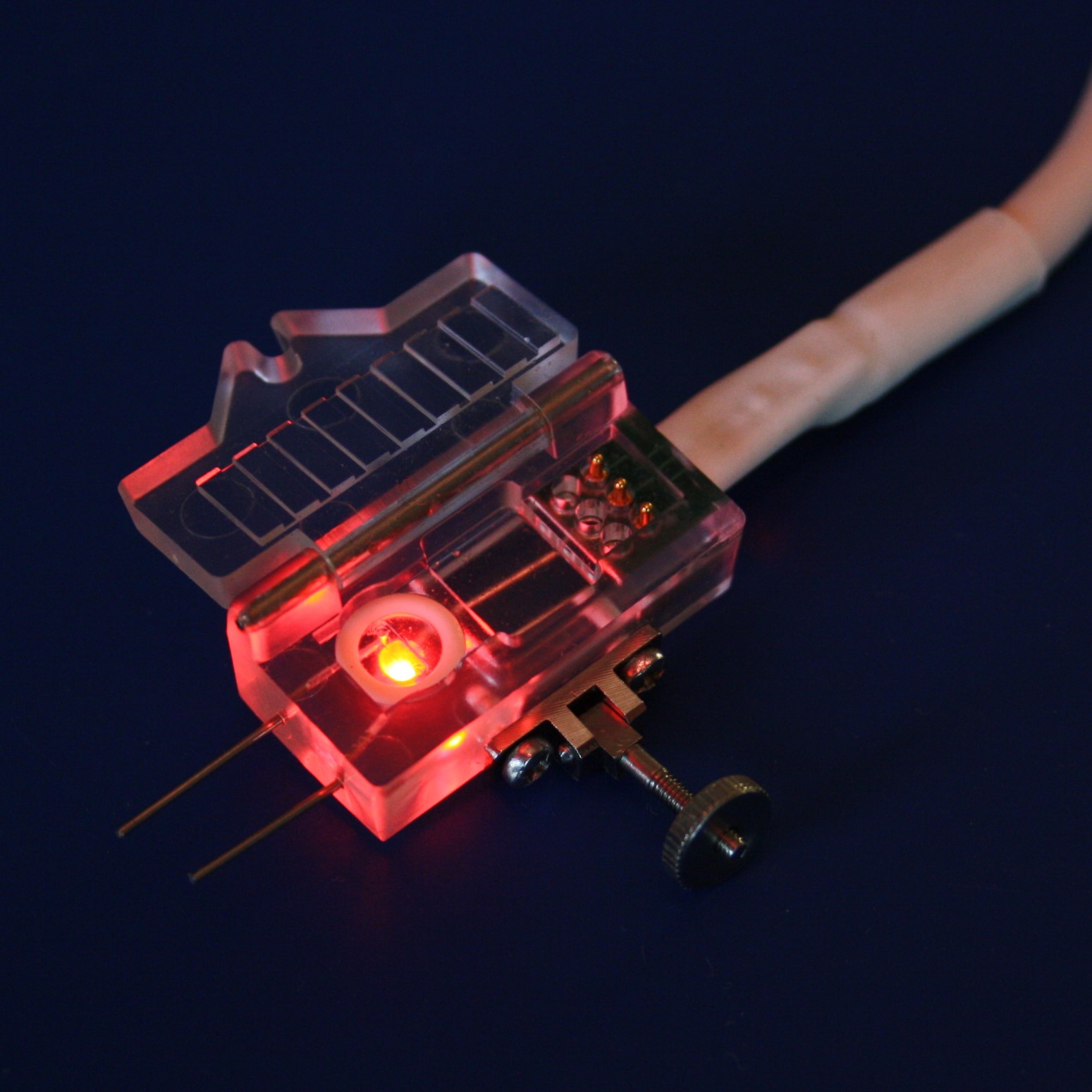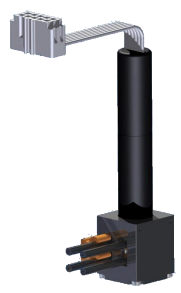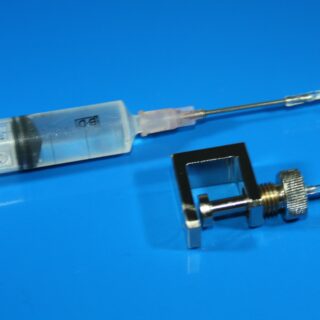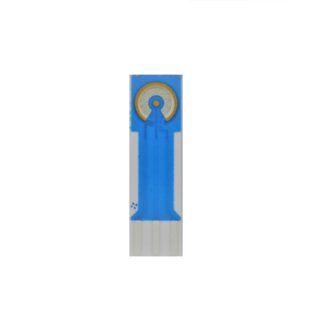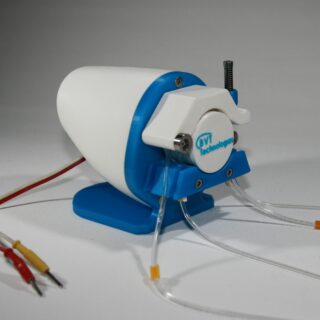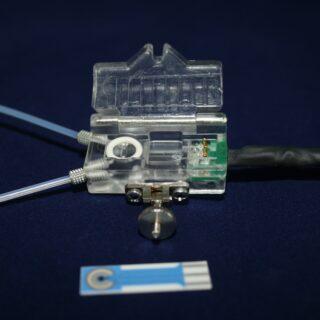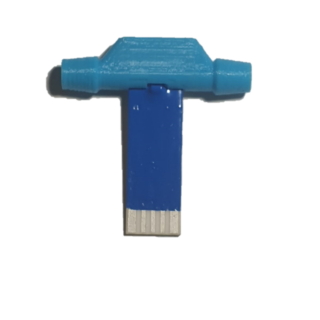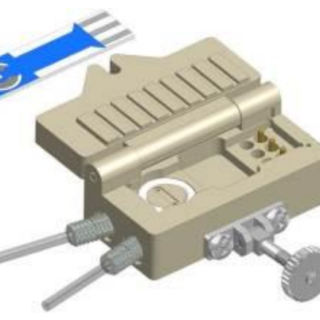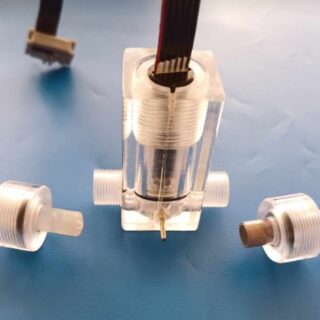Category
- CUSTOMER SERVICES
- NEW PRODUCTS
- Sensors and electrodes
- Custom made and Modified Screen Printed Electrodes
- Stirrers
- Cables and connectors
- Cell
- Potentiostats
- Manual Screen Printer
- Minithermostat
- Pumps
- Accessories
- Kits & Sets
- Discounted SPEs (at a reduced price with visual defects/inconsistancies, but fully functional)
FC3.TL.* LED Flow Cell
The flow cell enables the use of Screen printed sensors in a flow through arrangement for spectroelectrochemical measurements1,2.
The flow cell is suitable for sensors of type AC1, AC2, CC1, CC2 and CC3.
The Screen printed sensor is inserted into the slit of cell and tightened by closing of the door. The cell ensures the wall-jet flow around the working electrode and it is optimised so that no air bubbles cumulate in the cell. The cell contains also the contact and output cable.
With the sensors enclosed in a flow cell, it is possible to measure semi-automatically or automatically using a pump or liquid switch for sample supply. Under such conditions, maximum measurement reproducibility is ensured.
LED Specification:
Diameter: 3 mm
Wave lenght range: 350 – 2000 nm
- Standard: 620 – 630 nm
(If special laser LED is used the band width and other parameters can be specified on demand)
Emitting angle: 10 – 120 deg
- Standard: 60 deg
Iv (emitted power): 750 – 1120 mcd
I max: 20 mA
Useful Documents
Effect of flow rate
In the graph below, we can see the effect of the flow rate (from 1024 microliters/min to 4 microliters/min) of the carrier liquid (physiological solution) on the response of the glucose biosensor AC1.GOD enclosed in a flow cell. Physiological solution (carrier and washing liquid) was fed into the flow cell by a high-pressure pump.
The monitored analyte (1 mM glucose solution) was fed to the biosensor through a filling loop.
It can be seen from the graph that at lower flow rates, the peak corresponding to the response of the AC1.GOD biosensor to the analyte (1 mM glucose solution) broadens.

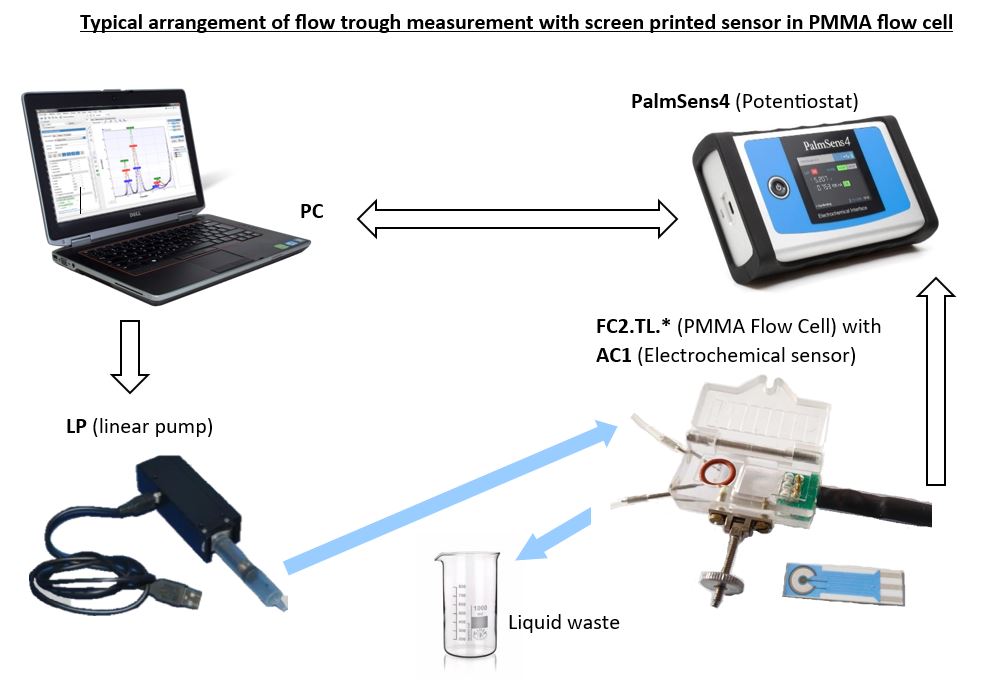
You may also like…
-
2PP10.M.T Dual Channel Peristaltic Pump
Read moreThe peristaltic pump 2PP10.M*.T* consists of miniature motor with planetary gear and stainless body of peristaltic pump.
Optionally the motor is equipped with encoder. The pump has two channels. The flow is in one direction. The pump is designed for extremely small applications such as medical or military applications. It can be used in hand-held devices. The lifetime of tubing is optimized to maximal value. The pulsation is minimized for flow cell FC2. The device is supplied by USB connection with PC.
-
WI Wash Instrument for FC
Read moreWashing instrument for flow cells FC2, FC3 and FC4.
Flow cells FC2, FC3 and FC4 can be fouled by buffer salts, standard or sample substances especially in the tubing that brings measured liquid to the sensor.
The salts embed namely in the edges of drilled openings. It causes decrease of the flow area, thereby flow rate. These negative influences decrease the signal and measurement reliability. Most frequently it happens when high salt concentration solutions or solutions with impurities are used. The flows cell can be washed by pressured water using syringe.
-
AC1 Electrochemical sensor
Read moreBasic amperometric low cost three-electrode sensor with patented structure made by thick film technology.
Dimensions: 25.4 x 7.26 x 0.63 mm
WE material: Au/Pt, Au, Pt, Ag, C
The sensor is formed on a corundum ceramic base. On to this surface the working, the reference and the auxiliary electrodes are applied. The working and the auxiliary electrodes are made of variety of materials. At the end of the sensor there is a contacting field which is connected with the active part by the silver conducting paths which are covered by a dielectric protection layer.
A bio-chemically active substance can be immobilised on the working electrode of the sensor to create a biosensor. All sensors can be equipped with heating and temperature sensing elements. Thermistor (must be calibrated) or Pt 1000 (the response corresponds to the ISO standard) is used as the temperature sensor.
We also offer:
- working electrode made of polished gold (WE diameter 1 or 2 mm) – sensor type: AC1P.W*.R*, with homogenous surface with roughness less than 1 µm
- working electrode made of a material of guaranteed purity of up to 99.99 % (WE diameter 2 mm) – sensor type: AC1.GP
We also offer activated graphite sensors on customer request.
See activation example below:
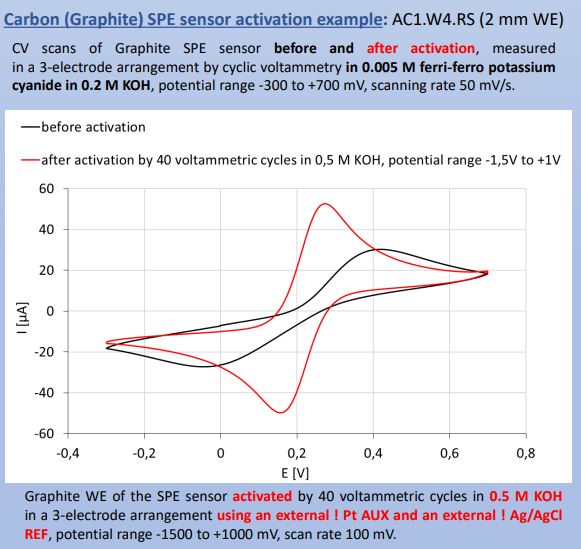
* Have a look at product cathegory Discounted SPEs – which include offer of Screen Printed Electrodes (SPEs) at a reduced Price from our AC1 line of Sensors. They are fully functional, but with visual defects or inconsistancies.
– ideal for use by students to gain handling experience and knowledge on SPEs and their uses
– ideal for initial experiments in research -
2PP.T Dual Channel Peristaltic Pump
Read moreThe peristaltic pump 2PP.T* is simple device for routine laboratory use. The pump has two channels. The flow is in one direction.
The lifetime of tubing is optimized to maximal value. The pulsation is minimized for flow cell FC2.
The integrated shaft enables fastening by standard laboratory clamps. The pump is supplied by max 12V. The rotation speed is controlled by voltage. The control unit is delivered with pump.
The force on the tubing is adjusted by screw a spring. The pulsation damper can be ordered separately.
Related products
-
FC2.TL.* PMMA Flow Cell
Read moreThe flow cell enables the use of Screen printed sensors in a flow through arrangement.
The flow cell is suitable for sensors of type AC1, AC2, CC1, CC2 and CC3.
The Screen printed sensor is inserted into the slit of cell and tightened by closing of the door. The cell ensures the wall-jet flow around the working electrode and it is optimised so that no air bubbles cumulate in the cell. The cell contains also the contact and output cable.
With the sensors enclosed in a flow cell, it is possible to measure semi-automatically or automatically using a pump or liquid switch for sample supply. Under such conditions, maximum measurement reproducibility is ensured.
-
CC4 Electrochemical Sensor Cell
Read moreConductometric sensor integrated with a specialised cell to create the CC4 Electrochemical Sensor Cell.
The CC4 sensor is formed on a corundum ceramic base. The structure consists of two platinum working electrodes (Pt WE) and an integrated thermistor on the opposite side covered by a dielectric protection layer.
Possible use of the CC4 sensor:
- Quality control of distillation
- Checking of waste waters from treatment plants, i.e. checking of Salt content
- …
-
FC4.TL.* PEEK Flow Cell
Read moreThe FC4.TL flow cell is made of PEEK and enables the use of Screen printed sensors in a flow through arrangement.
It has teflon endings permitting a fully compatible connection to chromatography tubing.
The flow cell is suitable for sensors of type AC1, AC2, CC1, CC2 and CC3.
The Screen printed sensor is inserted into the slit of cell and tightened by closing of the door. The cell ensures the wall-jet flow around the working electrode and it is optimised so that no air bubbles cumulate in the cell. The cell contains also the contact and output cable.
With the sensors enclosed in a flow cell, it is possible to measure semi-automatically or automatically using a pump or liquid switch for sample supply. Under such conditions, maximum measurement reproducibility is ensured.
-
FC.1ISE.1REF Flow cell for single ion selective electrode with integrated stirring
Read moreThe flow cell with integrated stirring and reduced hydrodynamic noise is designed for the determination of single analyte using one miniature ion-selective electrode (ISE) and one miniature reference electrode with a diameter of 6 mm and length of 60 mm.
Rotation speed of integrated stirrer: 10-4000 rmp.
Miniature ion-selective electrodes and reference electrode were designed for integration into the flow cell for determination of Cl-, K+, Ca2+ and Na+ ions.
In flow mode, the system can operate automatically. The speed of the integrated stirrer can also be controlled by applying the corresponding voltage to the motor, connected to a stabilized source.
The flow cell with one selected ISE can be used for:
- Automatic or semi-automatic measurement of concentration of Cl-, K+, Ca2+ and Na+ ions in various solutions (following prior calibration)
- For continuous measurement of changes in concentration of Cl-, K+, Ca2+ and Na+ ions.
* For this product, we recommend our customers use the Training Service from BVT.
(https://bvt.cz/produkt/offer-of-long-term-automated-measurements-on-bvt-apparatus/)

